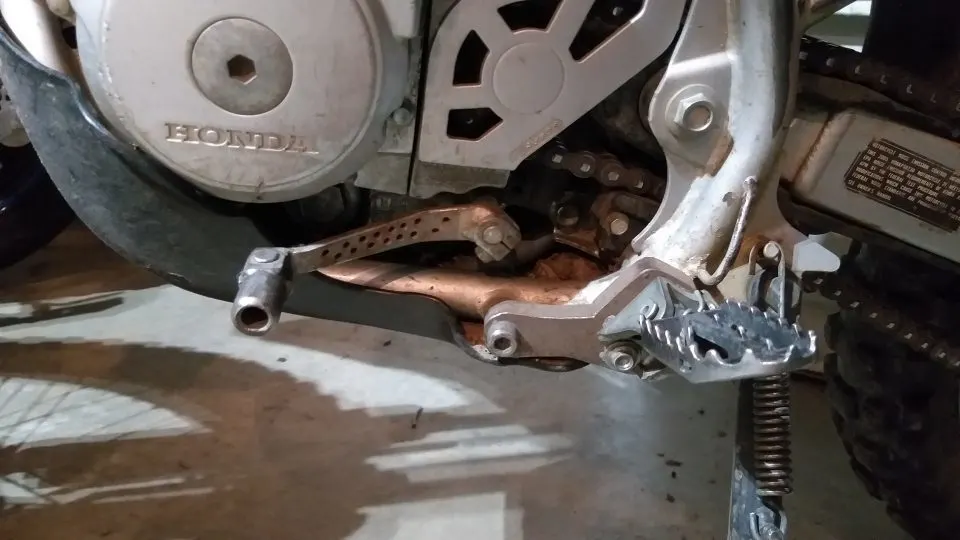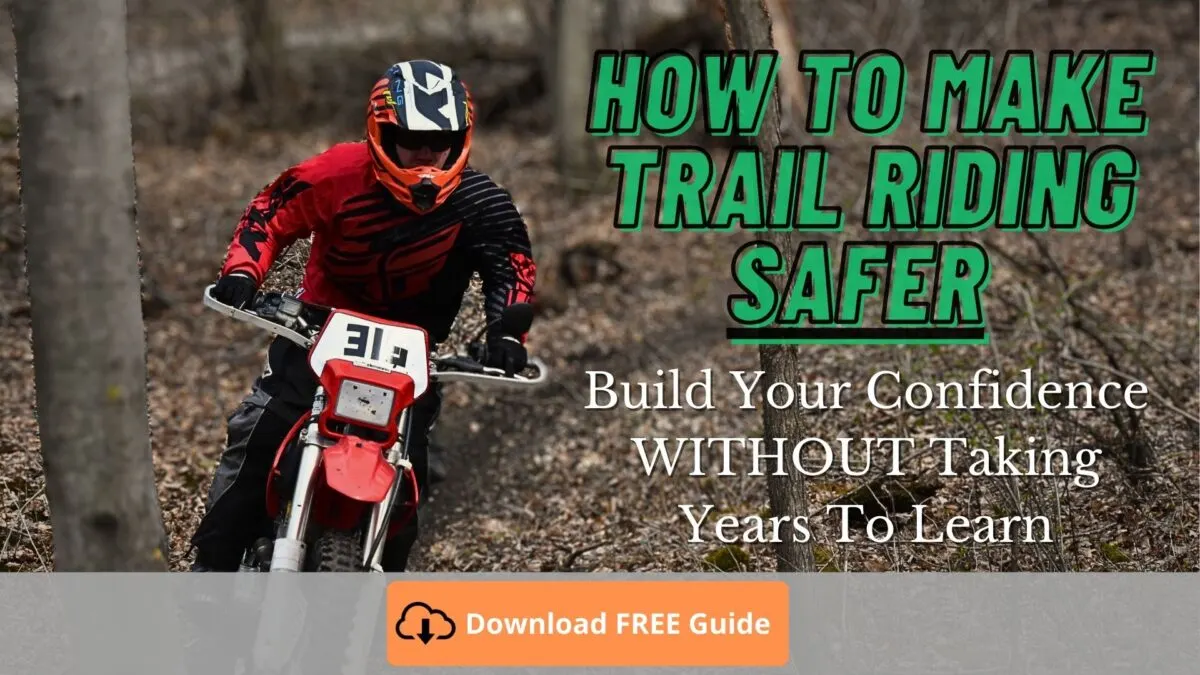Learning to ride a dirt bike is intimidating because you have to remember a lot of new things. How to use the throttle, clutch, brake, balance, as well as shifting gears.
Finding neutral on your dirt bike is just one or the new challenges. Whenever I teach someone new to riding, getting the transmission into neutral is often a struggle. However, with a little practice and proper technique, it will become second-nature to you.
What Is The Neutral Gear?
Neutral is the only spot in the transmission that isn't a gear. This simply means that your bike can never accelerate under the power of the engine while it's in neutral.

What Is A False Neutral?
A false neutral is simply when you are in between gears, such as 3rd & 4th, and it feels like you hit neutral because the engine “free revs” without accelerating.
False neutral can be caused by a problem in the transmission. However, the most common problem is that you didn’t push the shift lever hard enough. Nothing needs to be fixed or changed except for your shifting technique.
How Do You Put A Bike In Neutral?
On a manual dirt bike with a clutch, neutral is in between 1st and 2nd gear. Think of the gears as a ladder. 1st gear is at the bottom and 6th gear is at the top (some dirt bikes only have 4 or 5 gears).
You can practice shifting gears with the engine off and using your foot to push up or down. You will need to roll the bike forwards or backwards several inches if the engine is off. This is so that the transmission fully engages into each gear before shifting again.
You can only shift one gear at a time, so there's no need to kick hard. You will hear a click when it shifts gears.
To put your dirt bike into neutral from any gear you must:
Press down on the shift lever until it's in 1st gear. You may need to roll the bike forward or backwards each time it shifts.
Now lightly shift the lever up halfway until you hear a "softer click". You should now be in neutral, in between 1st and 2nd gear.
How Do You Know If Your Dirt Bike Is In Neutral?
To confirm that you're in neutral with the engine off, roll your dirt bike forwards or backwards a couple feet. If the rear wheel keeps rolling without locking up then you know you're in neutral.
If the rear wheel stops when you roll it, then it's still in one of the gears and you need to repeat the above process.
To confirm that you're in neutral with the engine running, slowly let out the clutch until the lever is all the way out (clutch engaged). If the bike doesn't start accelerating and the engine doesn't stop when you let the clutch lever out then you know you're in neutral.
Did the bike start moving or the engine die when you let the clutch lever out? That means the transmission is still in gear.
Why Is Neutral Between 1st & 2nd Gear?
Why wouldn't dirt bike manufacturer's put neutral at the bottom instead of in between two gears?
A dirt bike has a different type of transmission than a car, which can be shifted into any gear at any time. A dirt bike has a sequential transmission, which simply means that it can only be shifted up or down one gear at a time.
As I mentioned earlier, the gears are inline like a ladder. Think of the bullet list below as a ladder with 6th being the highest gear and top and 1st gear being the lowest at the bottom:
- 6th gear
- 5th gear
- 4th gear
- 3rd gear
- 2nd gear
- Neutral
- 1st gear
So, why is neutral in between 1st and 2nd gear? Simply for safety issues.
For example:
When you're riding up a hill and lose your momentum/speed, you'll need to shift down to keep the power up high enough to keep moving forward. You'll lose speed quickly, so shifting quickly is needed. If you keep pressing the shifter down then you'll always end up in 1st gear. If neutral was at the bottom then you'd stop in the same situation, which can be dangerous going up a hill.
Does A Dirt Bike Have To Be In Neutral To Start?
You don't have to be in neutral to start most dirt bikes. With that said, I always teach new riders to start in neutral at the beginning for a couple of reasons.
It's Safer At The Beginning
For one, it's a little bit safer if you're still getting used to the controls. You have to pull the clutch in if you're going to start the engine in gear. This means that once the engine is running, it will start moving once you let the clutch out, which may catch you off guard.
It's Easier When The Engine Is Hot
To put it simply, it's harder to start your dirt bike in gear when the engine is hot because the clutch has expanded.
Shifting into neutral is always the easiest way to start a dirt bike.
With that said, once you're confident, it's completely fine to start your bike in gear. It can be quicker if you're out on a trail and happen to stall it. Rather than finding neutral, just pull the clutch in and start it.
One More Reason
It's also just good practice to find neutral if you're a beginner. Practicing techniques and processes will build up your muscle memory over time so that you won't even have to "think" about it in the future.
Why Can't I Find Neutral On My Dirt Bike?
Sometimes it just seems that neutral is nowhere to be found. It's easiest if the engine is off.
The two most important things to remember are:
- If you don't know what gear you're in, keep shifting down until it's in first. The shift lever won't click down anymore once it's in first, then neutral is a half click up from there.
- Roll the bike several inches in either direction every time you shift. This allows each gear to fully "click" and align, making the next shift easier.
Dirt Bike Won't Go Into Neutral While Running?
It's frustrating if you have to shut the engine off just to get it into neutral. This isn't normal, but it is a common problem that can be fixed.
The most common cause for your dirt bike not going into neutral while running is that the clutch isn't fully disengaging. In other words, the clutch is dragging.
Clutch drag is often the result of an incorrectly adjusted clutch, or the clutch plates are warped.
Dirt Bike Training To Build Your Confidence
Looking for more training like this but more in depth to give you the confidence and control you need? Click here to learn more.

